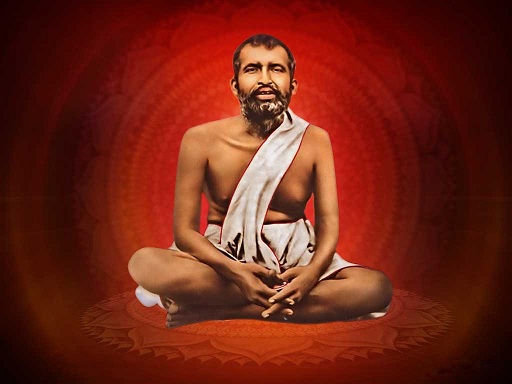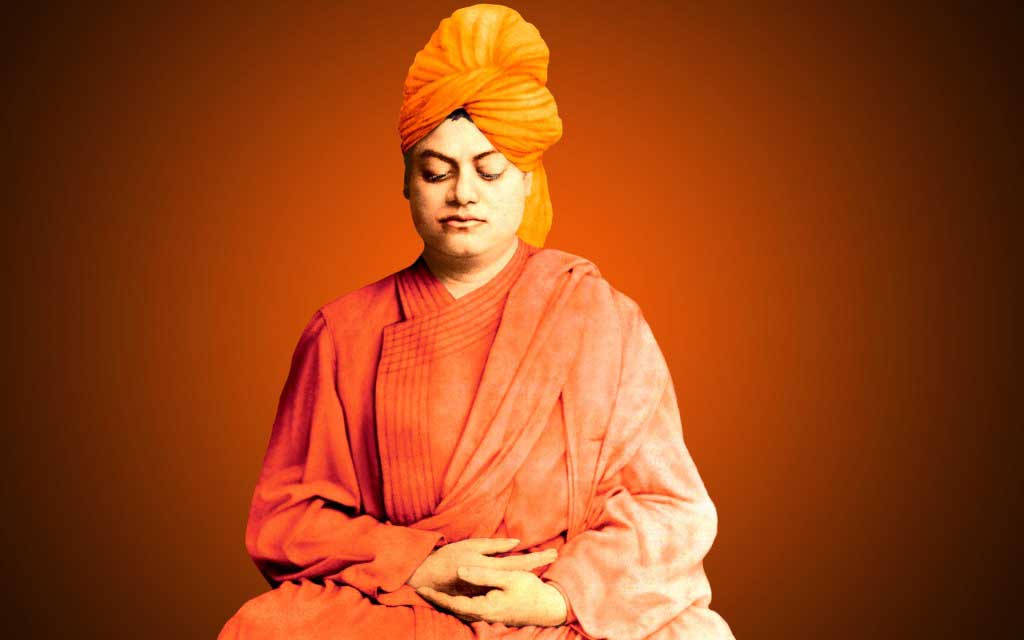

"The story of Ramakrishna Paramahamsa's life is a story of religion in practice. His life enables us to see God face to face. No one can read the story of his life without being convinced that God alone is real and all else is an illusion. Ramakrishna was a living embodiment of Godliness. His sayings are not for the mere learned man, but they are pages from the book of life."
The above encomium paid by Mahatma Gandhi is one of its kinds paid by the greatest men all over the world.
In chapter IV of the Bhagavad Gita, Sri Bhagawan has said ---
“Whenever there is a decline of dharma, O Bharata, and a rise of adharma, I Incarnate myself.
For the protection of the good, for the destruction of the wicked, and for the establishment of dharma, I am Born in every age.” (VII & VIII)
In the crisis ridden age when people were at a loss whether God is with form or without form, and were waging war based on the non-issue, Sri Ramakrishna came and said that God has form and at the same time, He is formless like water and ice. He taught the world the gem of a message – “As many faiths, so many paths” (Jato Mat Tato Path). He taught us not to confine God in places of worship only. If we worship His creation, we offer the highest kind of worship to Him.
The modern civilization is passing through the crisis of values. We are like ignorant armies groping in the darkness. The way shown by Sri Ramakrishna Paramahamsha, Holy Mother Sri Sarada Devi and Swami Vivekananda seems to be the best possible way open to us for leading a fruitful and valuable life.
The Holy Mother Sarada Devi was the spiritual counterpart of Sri Ramakrishna, one of the notable woman saints of the nineteenth-century mystic of Bengal. She paved the way for the future re-generation of women and womenhood. In fact the Sri Sarada Math and Ramakrishna Sarada Mission situated at Dakshineshwar is based on the ideals and life of Sri Sri Maa. Sri Sarada Devi played an important role in the growth and development of the Ramakrishna Movement in its primary formative stage after the demise of Sri Ramakrishnadev and also that of Swami Vivekananda (1902).
Holy Mother lived a simple, unassuming and extraordinarily modest life, yet her life and teachings range with the truth of the highest spiritual realization. As Swami Vivekananda’s great disciple Sister Nivedita wrote: “In her one sees realized that wisdom and sweetness to which simplest of women may attain. And yet, to myself the stateliness of her courtesy and her great open mind are almost as wonderful as her sainthood. Her life is one long stillness of prayer.”

Swami Vivekananda, an Indian Hindu monk was the chief disciple of the 19th-century Indian mystic Sri Ramakrishna. He was the key figure in the introduction of the Indian philosophies of Vedanta and Yoga to the Western world and is credited with raising interfaith awareness, bringing Hinduism to the status of a major world religion during the late 19th century.
Born into an aristocratic Bengali Kayastha family of Kolkata, Vivekananda was inclined towards spirituality from his very boyhood. He was influenced by his guru, Sri Ramakrishnadev, from whom he learnt that all living beings were an embodiment of the Divine self; therefore, service to God could be rendered by service to mankind. He travelled to the United States, representing India at the the World's Parliament of Religions at Chicago in 1893. Vivekananda conducted hundreds of public and private lectures and classes, disseminating tenets of Hindu philosophy in the United States, England and Europe and thereby reestablished the lost glory and supremacy of our motherland in the world scenario. In India, Vivekananda is regarded as a patriotic saint and his birthday is celebrated as National Youth Day.